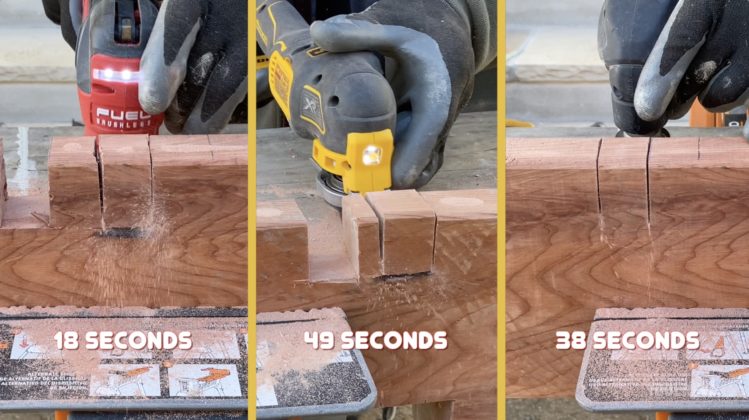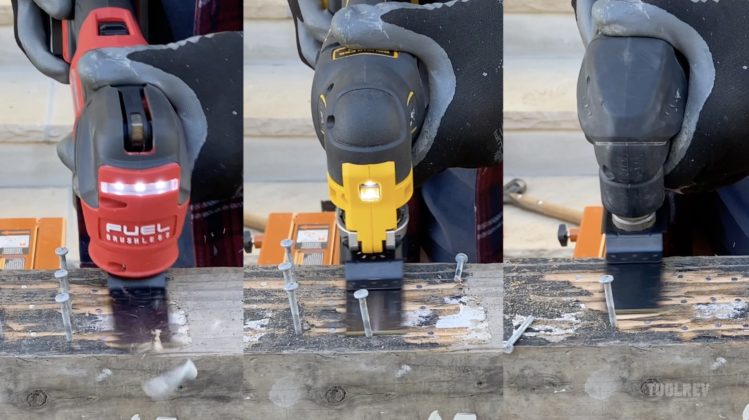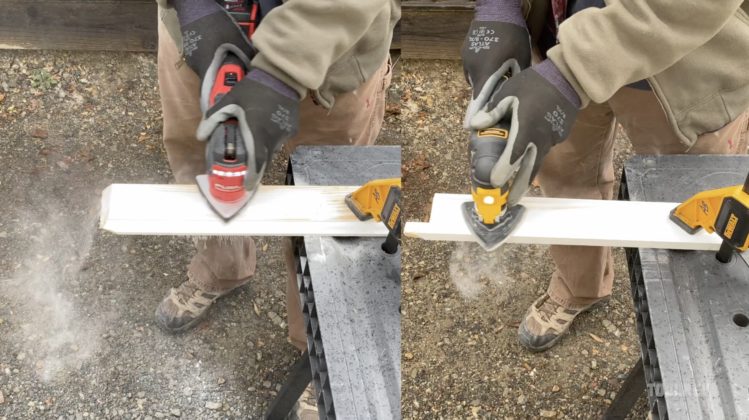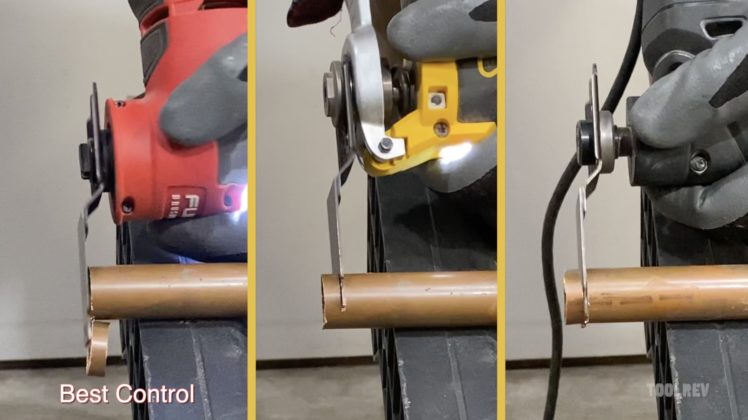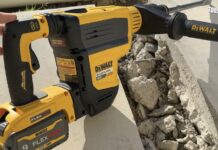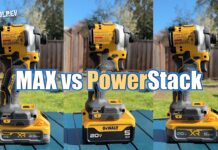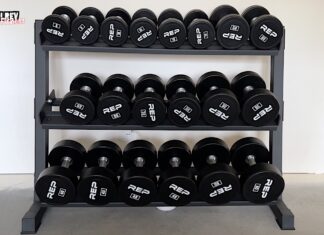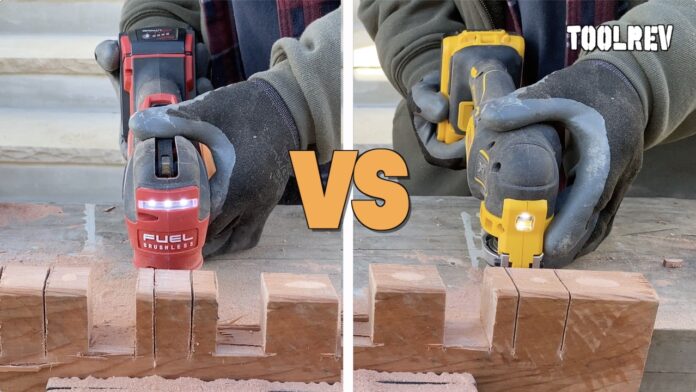
When I heard the Milwaukee M18 FUEL multi-tool 2836-20 was outpacing the DeWalt 20V DCS356 in plunge cuts, I had to test it myself. Spoiler: it’s not just faster at plunging—it sands faster, too. Way faster. In this comparison, I’ll break down how these cordless beasts stack up.
Specs: A Quick Look at the Numbers
Both the Milwaukee M18 FUEL 2836-20 and DeWalt 20V DCS356 pack brushless motors, LED work lights, tool-less blade changes (with a catch), and a top speed of 20,000 oscillations per minute (OPM). Here’s where they differ:
- Weight: Milwaukee (with a 5Ah battery) is 4.3 lbs.; DeWalt is lighter at 3.6 lbs.
- (DeWalt’s 5Ah MAX battery is lighter than Milwaukee’s 5Ah XC battery)
- Price: Milwaukee retails at $229, while DeWalt comes in at $129. (Pro tip: hunt for sales to snag either for less.)
On/Off Switch and Ergonomics
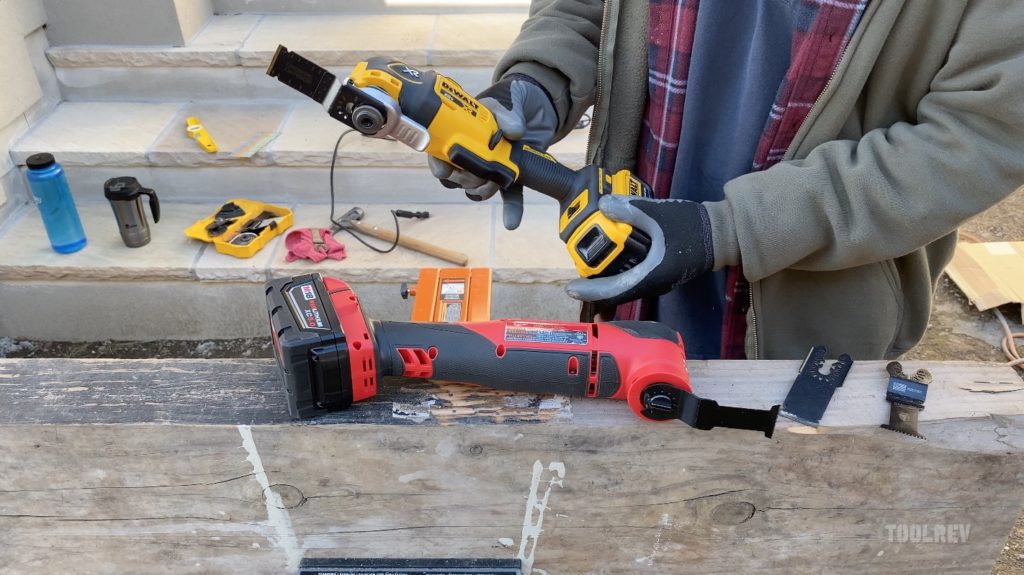
DeWalt 20V DCS356: Trigger Troubles
The DeWalt 20V DCS356 uses a variable speed trigger with three settings: 0-13K, 0-17K, and 0-20K OPM. You can lock it at any of those top speeds, which is how I roll most of the time. Why? The trigger grip vibrates intensely, and I typically use both hands (one on the battery, one on the body) for optimal control.
One-handed use? Forget it—my hand’s still buzzing a minute after using the trigger for 30 seconds.
Milwaukee M18 FUEL 2836-20: Smooth Operator
The Milwaukee M18 FUEL 2836-20 swaps the trigger for an on/off switch and a variable speed dial (10K-20K OPM). The grip has about one-third the vibration of DeWalt’s. I can run this tool one-handed all day, no problem. Some folks gripe about the speed selector’s placement, but for me, it’s perfect for one handed adjustments on the fly.
Winner: Milwaukee.
Power and Speed
To settle the score, I pitted the Milwaukee M18 FUEL 2836-20 against the DeWalt 20V DCS356 and my trusty 3-amp corded Makita. All ran at 20K OPM with fresh blades and fully charged 5Ah batteries. Here’s what went down:
- Plunge Cuts: The Milwaukee cuts like a reciprocating saw, blasting through material with minimal effort. DeWalt? It needs constant push-and-pull to clear dust, slowing you down.
- Nail Cutting: They’re close, but Milwaukee edges out slightly every time.
- Sanding: Milwaukee stripped paint off a baseboard twice as fast as DeWalt. No contest.
Staples: The FUEL cut 18GA flooring staples twice as fast as DeWalt’s DCS356. This isn’t just a few seconds faster—it’s hours saved on a job. It’s less back, knee, and neck strain faster.
Winner: Milwaukee. It’s a speed demon across the board.
Blade Change
- DeWalt 20V DCS356: Its blade change is lightning-fast for universal (open-end) accessories. But for Starlock blade compatibility or closed-end blades, you’ll need a hex wrench and the included adapter ring. So, not truly tool-less for all scenarios.
- Milwaukee M18 FUEL 2836-20: This beast handles everything—universal, Starlock, you name it—without adapters. That means more blade options and no fuss.
Winner: Milwaukee. Its universal compatibility gives you the best selection for any job.
Cut Quality
Here’s where DeWalt claws back some points. The DeWalt 20V DCS356 has a stiff blade attachment, keeping cuts straight with less pull-away. The Milwaukee M18 FUEL 2836-20 has some flex at the blade point, which can tug the blade off your line if you’re not careful.
Ironically, the DeWalt’s stiffer blade, which allows it to cut straight easier, is one reason why it cuts slower as the newer Milwaukee and Makita multi-tools have blade flex that clears dust better, allowing for faster cuts.
Another reason the Milwaukee cuts faster is its more aggressive angel of oscillation.
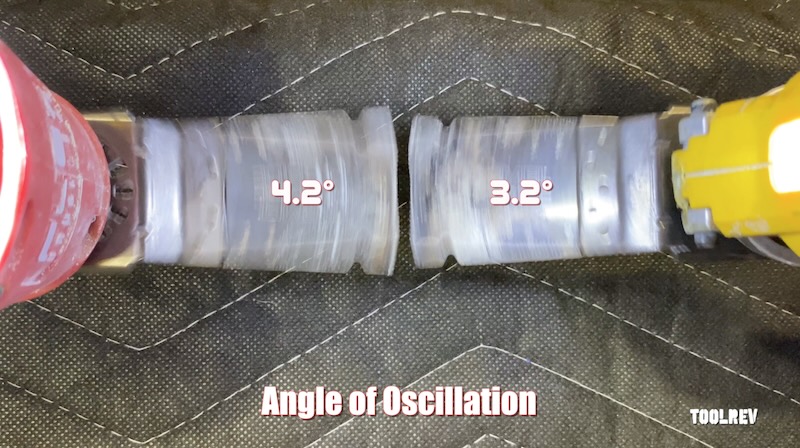
Winner: DeWalt (barely) for straighter lines, but Milwaukee’s speed makes it a wash for skilled users.
Bottom Line
The Milwaukee M18 FUEL 2836-20 is a next-level variable speed multi-tool that cuts like a reciprocating saw, sands like a dream, and feels great in the hand. It’s powerful enough that I can often leave my recip at home. The DeWalt 20V DCS356 is no slouch—lighter, cheaper, and precise—but it can’t match Milwaukee’s speed or comfort.
If you’re a pro or serious DIYer who values time and ergonomics, splurge on the Milwaukee. On a budget? DeWalt’s still a solid pick. For me, the Milwaukee vs DeWalt multi-tool battle has a clear champ: the M18 FUEL.
Update 2025: Issue with the Milwaukee FUEL
While cutting a 1-inch-thick barbell in half, the Milwaukee blade came loose about one-third through each of the three cuts I made. The DeWalt wouldn’t have this issue. Just sayin’.
That said, the FUEL’s still my pick since I’d normally use a grinder or cut-off saw for thick steel.
ToolRev earns commissions on purchases made through our links.
DeWalt 20V Max Oscillating Multi-tool (DCS356B)
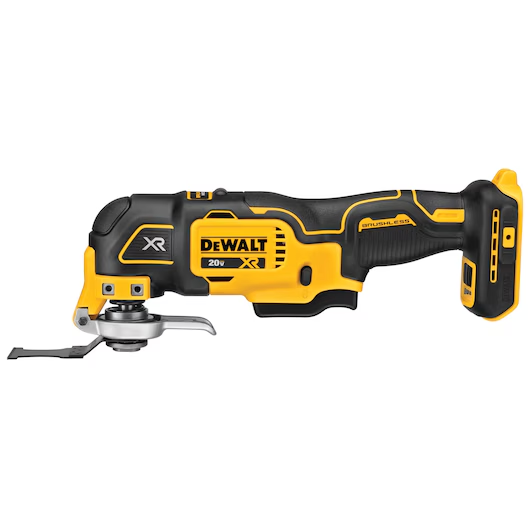
Milwaukee M18 FUEL Oscillating Multi-tool (2836-20)
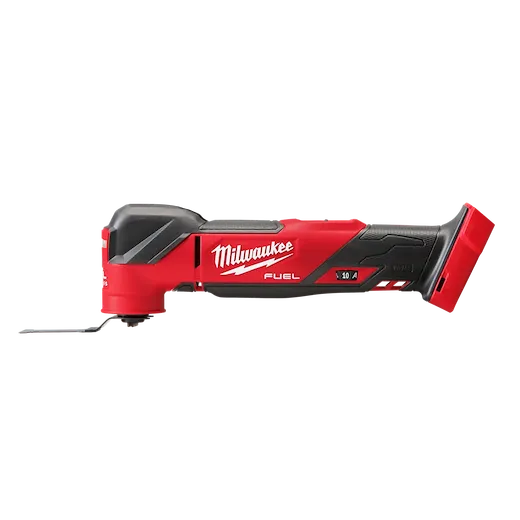
Check out this review to see these tools in action.
